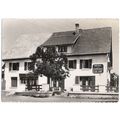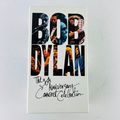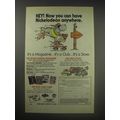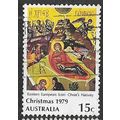Actor - Humphrey Bogart - Athena postcard c.1980s
- Condition : Used
- Dispatch : 2 Days
- Brand : None
- ID# : 128323301
- Quantity : 1 item
- Views : 862
- Location : United Kingdom

- Seller : justthebook (+1703)
- Barcode : None
- Start : Mon 19 May 2014 15:16:06 (EDT)
- Close : Run Until Sold
- Remain : Run Until Sold
Checks/Cheques
 for 1 item(s) edit
for 1 item(s) edit
Shipping Calculator
More Listings from This Seller view all
Seller's Description
- Postcard
- Picture / Image: Humphrey Bogart
- Publisher: Athena - Star Collection (9229)
- Postally used: no
- Stamp: n/a
- Postmark(s): n/a
- Sent to: n/a
- Notes / condition:
Please ask if you need any other information and I will do the best I can to answer.
Image may be low res for illustrative purposes - if you need a higher definition image then please contact me and I may be able to send one.
------------------------------------------------
Postage & Packing:
UK (incl. IOM, CI & BFPO): 99p
Europe: £1.60
Rest of world (inc. USA etc): £2.75
No additional charges for more than one postcard. You can buy as many postcards from me as you like and you will just pay the fee above once. (If buying postcards with other things such as books, please contact or wait for invoice before paying).
Payment Methods:
UK - PayPal, Cheque (from UK bank) or postal order
Outside UK: PayPal ONLY (unless otherwise stated) please. NO non-UK currency checks or money orders (sorry).
NOTE: All postcards are sent in brand new stiffened envelopes which I have bought for the task. These are specially made to protect postcards and you may be able to re-use them. In addition there are other costs to sending so the above charge is not just for the stamp!
I will give a full refund if you are not fully satisfied with the postcard.
----------------------------------------------
Text from the free encyclopedia WIKIPEDIA may appear below to give a little background information (internal links may not work) :
*************
Humphrey DeForest Bogart (December 25, 1899 – January 14, 1957)[1][2] was an American actor[3] and is widely regarded as an American cultural icon.[4][5] In 1999, the American Film Institute ranked Bogart as the greatest male star in the history of American cinema.
After trying various jobs, Bogart began acting in 1921 and became a regular in Broadway productions in the 1920s and 1930s. When the stock market crash of 1929 reduced the demand for plays, Bogart turned to film. His first great success was as Duke Mantee in The Petrified Forest (1936), and this led to a period of typecasting as a gangster with films such as Angels with Dirty Faces (1938) and B-movies like The Return of Doctor X (1939).
Bogart's breakthrough as a leading man came in 1941, with High Sierra and The Maltese Falcon. The next year, his performance in Casablanca raised him to the peak of his profession and, at the same time, cemented his trademark film persona, that of the hard-boiled cynic who ultimately shows his noble side. Other successes followed, including To Have and Have Not (1944); The Big Sleep (1946); Dark Passage (1947) and Key Largo (1948), with his wife Lauren Bacall; and The Treasure of the Sierra Madre (1948); In a Lonely Place (1950); The African Queen (1951), for which he won his only Academy Award; Sabrina (1954); and The Caine Mutiny (1954). His last movie was The Harder They Fall (1956). During a film career of almost 30 years, he appeared in 75 feature films.
Bogart was born on Christmas Day, 1899 in New York City, the eldest child of Dr. Belmont DeForest Bogart (July 1867, Watkins Glen, New York – September 8, 1934, Tudor City apartments, New York City) and Maud Humphrey (1868–1940). Belmont and Maud married in June 1898. The name “Bogart” comes from the Dutch surname “Bogaert”. It is derived from the word “bogaard”, a short name for “boomgaard”, which means “orchard”.[6] Bogart's father was a Presbyterian of English and Dutch descent; his mother was an Episcopalian of English descent. Bogart was raised in the Episcopalian faith, but was non-practising for most of his adult life.[7]
Bogart's birthday has been a matter of dispute; according to Warner Bros, he was born on Christmas Day, 1899. Others believe that this was a fiction created by the studio to romanticize their star, and that he was actually born on January 23, 1899. However, this story is now considered baseless: although no birth certificate has ever been found, his birth notice did appear in a New York newspaper in early January 1900, which supports the December 1899 date, as do other sources, such as the 1900 census.[N 1]
Bogart's father, Belmont, was a cardiopulmonary surgeon. His mother, Maud Humphrey, was a commercial illustrator, who received her art training in New York and France, including study with James McNeill Whistler, and who later became art director of the fashion magazine The Delineator. She was a militant woman suffragist.[9] She used a drawing of baby Humphrey in a well-known ad campaign for Mellins Baby Food.[10] In her prime, she made over $50,000 a year, then a vast sum, far more than her husband's $20,000 per year.[11] The Bogarts lived in a fashionable Upper West Side apartment, and had an elegant cottage on a 55-acre estate in upstate New York on Canandaigua Lake. As a youngster, Humphrey's gang of friends at the lake would put on theatricals.[12]
Humphrey was the oldest of three children; he had two younger sisters, Frances and Catherine Elizabeth (Kay).[10] His parents were very formal, busy in their careers, and frequently fought—resulting in little emotion directed at the children, ""I was brought up very unsentimentally but very straightforwardly. A kiss, in our family, was an event. Our mother and father didn't glug over my two sisters and me.""[13] As a boy, Bogart was teased for his curls, his tidiness, the ""cute"" pictures his mother had him pose for, the Little Lord Fauntleroy clothes she dressed him in—and the name ""Humphrey.""[14] From his father, Bogart inherited a tendency for needling people, a fondness for fishing, a lifelong love of boating, and an attraction to strong-willed women.[15]
The Bogarts sent their son to private schools. Bogart attended the Delancey School until fifth grade, when he was enrolled in Trinity School.[16] He was an indifferent, sullen student who showed no interest in after-school activities.[15] Later he went to the prestigious preparatory school Phillips Academy, in Andover, Massachusetts, where he was admitted based on family connections.[17] They hoped he would go on to Yale, but in 1918, Bogart was expelled.[18] The details of his expulsion are disputed: one story claims that he was expelled for throwing the headmaster (alternatively, a groundskeeper) into Rabbit Pond, a man-made lake on campus. Another cites smoking and drinking, combined with poor academic performance and possibly some inappropriate comments made to the staff. It has also been said that he was actually withdrawn from the school by his father for failing to improve his academics, as opposed to expulsion. In any case, his parents were deeply dismayed by the events and their failed plans for his future.[19]
With no viable career options, Bogart followed his passion for the sea and enlisted in the United States Navy in the spring of 1918. He recalled later, ""At eighteen, war was great stuff. Paris! Sexy French girls! Hot damn!""[20] Bogart is recorded as a model sailor who spent most of his months in the Navy after the armistice was signed ferrying troops back from Europe.[21]
It was during his naval stint that Bogart may have received his trademark scar and developed his characteristic lisp, though the actual circumstances are unclear. In one account, during a shelling of his ship the USS Leviathan, his lip was cut by a piece of shrapnel, although some claim Bogart did not make it to sea until after the Armistice with Germany was signed. Another version, which Bogart's long-time friend, author Nathaniel Benchley, claims is the truth, is that Bogart was injured while on assignment to take a naval prisoner to Portsmouth Naval Prison in Kittery, Maine. Supposedly, while changing trains in Boston, the handcuffed prisoner asked Bogart for a cigarette and while Bogart looked for a match, the prisoner raised his hands, smashed Bogart across the mouth with his cuffs, cutting Bogart's lip, and fled. The prisoner was eventually taken to Portsmouth. An alternate explanation, is that in the process of uncuffing an inmate, Bogart was struck in the mouth when the inmate wielded one open, uncuffed bracelet while the other was still on his wrist.[22]
By the time Bogart was treated by a doctor, the scar had already formed. ""Goddamn doctor,"" Bogart later told David Niven, ""instead of stitching it up, he screwed it up."" Niven says that when he asked Bogart about his scar he said it was caused by a childhood accident; Niven claims the stories that Bogart got the scar during wartime were made up by the studios to inject glamor. His post-service physical makes no mention of the lip scar even though it mentions many smaller scars, so the actual cause may have come later.[21] When actress Louise Brooks met Bogart in 1924, he had some scar-tissue on his upper lip, which Belmont said that Bogart may have partially repaired before entering films in 1930.[19] She believes his scar had nothing to do with his distinctive speech pattern, his ""lip wound gave him no speech impediment, either before or after it was mended. Over the years, Bogart practiced all kinds of lip gymnastics, accompanied by nasal tones, snarls, lisps and slurs. His painful wince, his leer, his fiendish grin were the most accomplished ever seen on film.""[23]
Early career[edit]
Bogart returned home to find that his father was suffering from poor health (perhaps aggravated by morphine addiction), his medical practice was faltering, and he had lost much of the family's money on bad investments in timber.[24] During his naval days, Bogart's character and values developed independently of family influence, and he began to rebel somewhat against their values. He came to be a liberal who hated pretensions, phonies, and snobs, and at times he defied conventional behavior and authority, traits he displayed in life and in his movies. On the other hand, he retained their traits of good manners, articulateness, punctuality, modesty, and a dislike of being touched.[25] After his naval service, Bogart worked as a shipper and then bond salesman.[26] He joined the Naval Reserve.
Bogart resumed his friendship with boyhood pal Bill Brady, Jr. whose father had show business connections, and eventually Bogart got an office job working for William A. Brady Sr.'s new company, World Films.[27] Bogart was able to try his hand at screenwriting, directing, and production, but excelled at none. For a while, he was stage manager for Brady's daughter's play A Ruined Lady. A few months later, in 1921, Bogart made his stage debut in Drifting as a Japanese butler in another Alice Brady play, nervously speaking one line of dialog. Several more appearances followed in her subsequent plays.[28] Bogart liked the late hours actors kept, and enjoyed the attention an actor got on stage. He stated, ""I was born to be indolent and this was the softest of rackets.""[26] He spent a lot of his free time in speakeasies and became a heavy drinker. A barroom brawl during this time might have been the actual cause of Bogart's lip damage, as this coincides better with the Louise Brooks account.[29]
Bogart had been raised to believe that acting was beneath a gentleman, but he enjoyed stage acting. He never took acting lessons, but was persistent and worked steadily at his craft. He appeared in at least seventeen Broadway productions between 1922 and 1935.[30] He played juveniles or romantic second-leads in drawing room comedies. He is said to have been the first actor to ask ""Tennis, anyone?"" on stage.[31] Critic Alexander Woollcott wrote of Bogart's early work that he ""is what is usually and mercifully described as inadequate.""[32] Some reviews were kinder. Heywood Broun, reviewing Nerves wrote, ""Humphrey Bogart gives the most effective performance...both dry and fresh, if that be possible"".[33] Bogart loathed the trivial, effeminate parts he had to play early in his career, calling them ""White Pants Willie"" roles. He played juvenile lead, reporter Gregory Brown, in the comedy Meet the Wife, written by Lynn Starling, which had a successful run of 232 performancs at the Klaw Theatre from November 26, 1923 to July 1924.
Early in his career, while playing double roles in the play Drifting at the Playhouse Theatre in 1922, Bogart met actress Helen Menken. They were married on May 20, 1926 at the Gramercy Park Hotel in New York City, divorced on November 18, 1927, but remained friends.[34] On April 3, 1928, he married Mary Philips at her mother's apartment in Hartford, Connecticut. She, like Menken, had a fiery temper and, like every other Bogart spouse, was an actress. He had met Mary when they appeared in the play Nerves, which had a very brief run at the Comedy Theatre in September 1924.
After the stock market crash of 1929, stage production dropped off sharply, and many of the more photogenic actors headed for Hollywood. Bogart's earliest film role is with Helen Hayes in the 1928 two-reeler The Dancing Town, of which a complete copy has never been found. He also appeared with Joan Blondell and Ruth Etting in a Vitaphone short, Broadway's Like That (1930) which was re-discovered in 1963.[35]
Bogart then signed a contract with Fox Film Corporation for $750 a week. Spencer Tracy was a serious Broadway actor who Bogart liked and admired, and they became close friends and drinking companions. It was Tracy, in 1930, who first called him ""Bogey"". (Spelled variously in many sources, Bogart himself spelled his nickname ""Bogie"".)[36] Tracy and Bogart appeared in their only film together in John Ford's early sound film Up the River (1930), with both playing extremely large roles as inmates; Tracy received top billing and Bogart's face was featured on the film's posters instead of Tracy's. The movie was Tracy's film debut.[37] Bogart then performed in The Bad Sister with Bette Davis in 1931, in a minor supporting role.[38] Decades later, Tracy and Bogart planned to make The Desperate Hours together but both sought top billing so Tracy dropped out and was replaced by Fredric March.
Bogart shuttled back and forth between Hollywood and the New York stage from 1930 to 1935, suffering long periods without work. His parents had separated, and Belmont died in 1934 in debt, which Bogart eventually paid off. Bogart inherited his father's gold ring which he always wore, even in many of his films. At his father's deathbed, Bogart finally told Belmont how much he loved him.[39] His second marriage was on the rocks, and he was less than happy with his acting career to date; he became depressed, irritable, and drank heavily.[40]
type=printed postcards
theme=people
sub-theme=actors
number of items=single
period=1945 - present
postage condition=unposted
Listing Information
| Listing Type | Gallery Listing |
| Listing ID# | 128323301 |
| Start Time | Mon 19 May 2014 15:16:06 (EDT) |
| Close Time | Run Until Sold |
| Starting Bid | Fixed Price (no bidding) |
| Item Condition | Used |
| Bids | 0 |
| Views | 862 |
| Dispatch Time | 2 Days |
| Quantity | 1 |
| Location | United Kingdom |
| Auto Extend | No |













